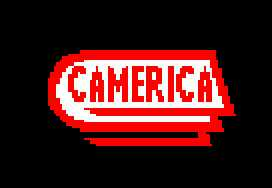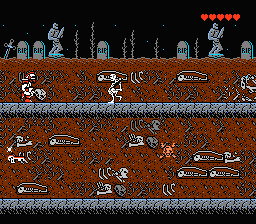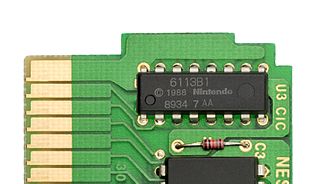The video game crash of 1983 was a large-scale recession in the video game industry that occurred from 1983 to 1985, primarily in the United States. The crash was attributed to several factors, including market saturation in the number of video game consoles and available games, many of which were of poor quality. Waning interest in console games in favor of personal computers also played a role. Home video game revenue peaked at around $3.2 billion in 1983, then fell to around $100 million by 1985. The crash abruptly ended what is retrospectively considered the second generation of console video gaming in North America. To a lesser extent, the arcade video game market also weakened as the golden age of arcade video games came to an end.
A regional lockout is a class of digital rights management preventing the use of a certain product or service, such as multimedia or a hardware device, outside a certain region or territory. A regional lockout may be enforced through physical means, through technological means such as detecting the user's IP address or using an identifying code, or through unintentional means introduced by devices only supporting certain regional technologies.

Caltron 6 in 1 is a multicart developed and published in 1992 for the NES in North America by Caltron Industries, Inc., a Taiwan-based video game company which was either closely related to, or simply a pseudonym for, NTDEC. In Australia, it was published under the title Real Player‘s Pak by HES. Dynacom released the cartridge as Multi Ação 6-in-1 for the Brazilian market. All the featured games, except Porter, were released as single game cartridges in Spain by Gluk Video.
In video game parlance, a multicart is a cartridge that contains more than one game. Typically, the separate games are available individually for purchase or were previously available individually. For this reason, collections, anthologies, and compilations are considered multicarts. The desirability of the multicart to consumers is that it provides better value, greater convenience, and more portability than the separate games would provide. The advantage to developers is that it allows two or more smaller games to be sold together for the price of one larger game, and provides an opportunity to repackage and sell older games one more time, often with little or no changes.

Wisdom Tree, Inc. is an American developer of Christian video games. It was an offshoot of Color Dreams, one of the first companies to work around Nintendo's 10NES lockout chip technology for the Nintendo Entertainment System. Color Dreams formed the Wisdom Tree subsidiary in 1990 in an effort to circumvent Nintendo's restrictions against publishers of unlicensed video games for the NES by selling their games at Christian book stores which was not subject to pressure by Nintendo.
In video gaming, famiclone is a term used to refer to a hardware clone of the Nintendo Entertainment System (NES), known in Japan as the Family Computer or Famicom. They are designed to replicate the workings of, and play games designed for, the NES and Famicom. Hundreds of unauthorized clones and unlicensed game copies have been made available since the height of the NES popularity in the late 1980s. The technology employed in such clones has evolved over the years: while the earliest clones feature a printed circuit board containing custom or third party integrated circuits (ICs), more recent (post-1996) clones utilize single-chip designs, with a custom ASIC which simulates the functionality of the original hardware, and often includes one or more on-board games. Most devices originate in China and Taiwan, and less commonly South Korea. Outside China and Taiwan, they are mostly widespread across emerging markets of developing countries.

David Crane is an American video game designer and programmer. Crane grew up fascinated by technology and went to DeVry Institute of Technology. Following college, he went to Silicon Valley and got his first job at National Semiconductor. Through his friend Alan Miller he learned about potential video game design work at Atari, Inc. and began work there in 1977.

Camerica was a Canadian video game company founded in 1988. It released various unlicensed video games and accessories for the Nintendo Entertainment System, such as the Game Genie, and was the North American publisher for British developer Codemasters.
Tengen Inc. was an American video game publisher and developer that was created by the arcade game manufacturer Atari Games for publishing computer and console games. It had a Japanese subsidiary named Tengen Ltd..

The history of the Nintendo Entertainment System (NES) spans the 1982 development of the Family Computer, to the 1985 launch of the NES, to Nintendo's rise to global dominance based upon this platform throughout the late 1980s. The Family Computer or Famicom was developed in 1982 and launched in 1983 in Japan. Following the North American video game crash of 1983, the Famicom was adapted into the NES which was launched in North America in 1985. Transitioning the company from its arcade game history into this combined global 8-bit home video game console platform, the Famicom and NES continued to aggressively compete with next-generation 16-bit consoles, including the Sega Genesis. The platform was succeeded by the Super Famicom in 1990 and the Super Nintendo Entertainment System in 1991, but its support and production continued until 1995. Interest in the NES has been renewed by collectors and emulators, including Nintendo's own Virtual Console platform.

Color Dreams is an American company formerly known for developing and publishing unlicensed video games for the 8-bit Nintendo Entertainment System (NES). The company left the video game industry in the mid-1990s, shifting its focus to IP cameras and related surveillance equipment.
A dedicated console is a video game console that is limited to one or more built-in video game or games, and is not equipped for additional games that are distributed via ROM cartridges, discs, downloads or other digital media. Dedicated consoles were very popular in the first generation of video game consoles until they were gradually replaced by second-generation video game consoles that use ROM cartridges.

Star Wars: The Empire Strikes Back is a video game released for the Nintendo Entertainment System in 1992. It is the sequel to the original Star Wars for the NES. This is the second of three video games released under the Empire Strikes Back title that were developed directly for home video game systems. It was preceded by a version for the Atari 2600 and succeeded by Super Star Wars: The Empire Strikes Back for the Super NES.

Indiana Jones and the Temple of Doom is an action game released in 1988 for the Nintendo Entertainment System. The game is based on the arcade game and film of the same name. The resulting product differed from the arcade version in several aspects, but kept the same underlying premise and style.

The Nintendo Entertainment System (NES) is an 8-bit third-generation home video game console produced by Nintendo. It was first released in Japan in 1983 as the Family Computer (FC), commonly referred to as Famicom. It was redesigned to become the NES, which was released in American test markets in 1985, and was soon fully launched in North America and other regions.

The Checking Integrated Circuit (CIC) is a lockout chip designed by Nintendo for the Nintendo Entertainment System (NES) video game console in 1985; the chip is part of a system known as 10NES, in which a key is used by the lock to both check if the game is authentic, and if the game is the same region as the console.
American Game Cartridges (AGC) was an American video game developer and publisher established as a subsidiary of ShareData in 1990. Like ShareData, American Game Cartridges was headquartered in Chandler, Arizona. AGC published three video games for the Nintendo Entertainment System (NES) in 1990.

The Nintendo Entertainment System Game Pak is the software storage medium for the Nintendo Entertainment System.

Atari Games Corp. v. Nintendo of America Inc., 975 F.2d 832, is a U.S. legal case in which Atari Games engaged in copyright infringement by copying Nintendo's lock-out system, the 10NES. The 10NES was designed to prevent Nintendo's video game console, the Nintendo Entertainment System (NES), from playing unauthorized game cartridges. Atari, after unsuccessful attempts to reverse engineer the lock-out system, obtained an unauthorized copy of the source code from the United States Copyright Office and used it to create its 10NES replica, the Rabbit. Atari then sued Nintendo for unfair competition and copyright misuse, and Nintendo responded that Atari had engaged in unfair competition, copyright infringement, and patent infringement.













